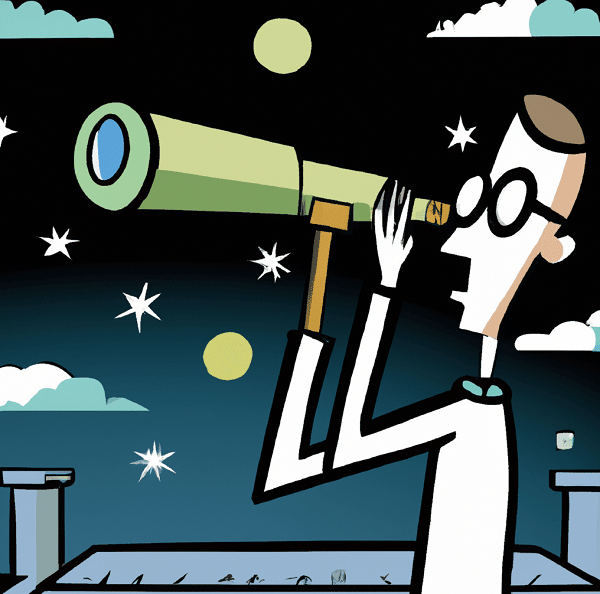
Have you ever wondered why we perceive things differently? It turns out that perception plays a crucial role in how we interact with the world around us. It defines our beliefs, our decisions, and our behavior. In this article, we’ll explore the different elements of perception and how it affects our everyday lives. From how the senses come into play to the influence of contextual cues, we’ll uncover the power of perception and its impact on our lives. So let’s get started!
What is Perception?
Perception is an integral part of how we interact with the world around us. It interprets sensory information, such as light, sound, or temperature, to create a meaningful experience. Perception is a core foundation of our understanding of the world and affects how we think, feel, and act.
To start exploring the influence of perception, it’s essential to understand precisely what it is. Perception is an active process, meaning our brains constantly make decisions as they interpret what we observe. This includes our physical environment and our internal and external experiences. Factors, including our culture, values, and beliefs, often shape our perception of our environment. Furthermore, our perception can be influenced and shaped by media, such as television, books, and even the internet.
Our perception of the environment can be subjective, meaning it is unique and personal to each individual. A range of factors, including age, gender, culture, verbal communication, and past experiences, can impact a person’s perception. For example, a young child may interpret a situation differently than an older adult due to different levels of understanding and life experience. Furthermore, an individual’s attitude and emotions can alter their perception of an event or situation.
Through perception, we can make sense of the world around us and build a mental image of our environment. Through this understanding, we can react in different ways and make decisions. For example, we can identify danger or be inspired by beauty. Through perception, we can appreciate and develop our understanding of the world.
By exploring the influence of perception, we can gain insight into how it affects our daily lives and decision-making. It is clear that perception plays a vital role in our lives and should be considered. The more we understand perception, the better we can make decisions and deal with the complexities of life.
The Role of the Senses in Perception
Our senses play a critical role in our perception of the world. We rely heavily on our senses of sight, hearing, taste, touch, and smell to interpret and make sense of our environment. Using these senses; we can create a vivid picture of our surroundings. For example, a loud noise, such as a car horn, may lead us to interpret something as loud and potentially dangerous. Likewise, a pleasant smell may cause us to think of something as pleasant. Our senses act as gateways to our interpretations of the world around us.
The Impact of Perception on Behavior
Our perception of reality has a significant influence on our behavior. Our interpretation of past events or expectations of future ones can shape how we interact with the world and the people around us. It can determine whether or not we take risks, how we respond to challenges, and even how much effort we put into completing a task. It can also affect our relationships, as our perceptions of a person can drive our interactions with them. By understanding and managing our perception, we can control our behavior and, ultimately, our lives more accurately.
How Perception Influences Decision Making
Humans rely on the senses to process information, and when making decisions, people rely on perceptions to inform their choices. How our perceptions influence decision-making can be broken down into three main categories; cognitive biases, emotional responses, and selective attention. Cognitive biases result from our tendency to process information through preset mental filters instead of objectively evaluating potential outcomes. On the other hand, emotional responses consist of reactions based on instinct or gut feelings. Lastly, selective attention is how people prioritize certain types of input over others without necessarily being aware of doing so. Through these factors, perceptions profoundly shape our decisions and help determine the course of our lives.
The Relationship between Attitudes and Perception
When discussing the influence of perception, it is essential to understand the relationship between attitude and perception. Attitude can affect the way we perceive ourselves and the world around us. This can shape how we interact with our environment and, ultimately, how successful we will be. Similarly, our perception of others and our environment can affect our attitude and worldview. It is a two-way street; when we take time to understand this relationship, we can better understand how our attitudes and perceptions intertwine.
Perceptual Illusions
Perceptual illusions are a great way to explore how perception influences our understanding of the world around us. These illusions demonstrate how our perceptual systems can be tricked into detecting patterns and features that don’t exist. A classic example of a perceptual illusion is the
‘Zöllner illusion’ consists of several angled lines with intersecting lines at either end. The angled lines appear distorted and curved when viewed from a certain angle. This distortion is an example of how our perceptual systems can be tricked into seeing something that doesn’t exist.
Gestalt Principles of Perceptual Organization
Gestalt psychology is a school of thought that looks at how we perceive and interpret the world around us. One influential theory within Gestalt psychology is the Gestalt Principles of Perceptual Organization. These principles state that our brains interpret objects, entities, or environments in ways that create a whole or more excellent structure. Specifically, the Gestalt principles explain that we perceive elements in our environment as a unified image and try to create a logical and organized structure with what we see. For example, when we look at a room, our brains take in all of the elements within the room and construct a holistic perception of the space. These principles help to explain how we experience and interpret the world and help explore the influence of perception.
The Role of Context in Perception
Context is a crucial factor influencing our perception of the world around us. Whether in a loud and crowded room or a quiet and peaceful forest, the environment can drastically alter our perception of the same experience. Studies have shown that the context in which information is presented can affect how we perceive it. For instance, if an individual is presented with the same facts in a different setting, they might view these facts differently. Context can also shape how we interpret our surroundings, as well as how we judge the actions and behaviors of others. By understanding the influence of context on perception, we can gain insight into our beliefs and clarity on how we view the world.
Conclusion
In conclusion, perception plays a significant role in our day-to-day lives. It allows us to make sense of the world around us by processing the information we receive through our senses. The impact of perception on behavior, decision-making, and attitudes is undeniable, and understanding the various aspects of it offers us insight into how our mind works. Through perceptual illusions and Gestalt principles of organization, we can gain an even further understanding of perception. Lastly, the role of context should always be considered when examining the influence of perception. We can identify and analyze how our minds perceive the world through this understanding.
Read more:
Recognizing When You Need To Make A Change



